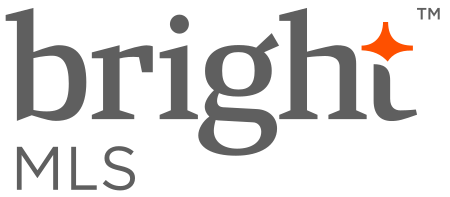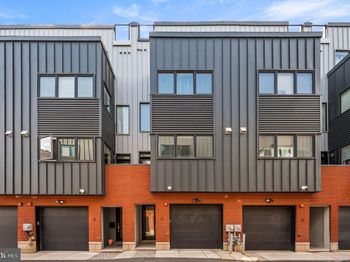Gayborhood
The area approximately located around Chestnut, Pine, Juniper and 11th Streets within Washington Square West is known as The Gayborhood. It is so-named because of its large concentration of gay and lesbian friendly small businesses, services, restaurants, and gay bars.
About Gayborhood
The area approximately located around Chestnut, Pine, Juniper and 11th Streets within Washington Square West is known as The Gayborhood. It is so-named because of its large concentration of gay and lesbian friendly small businesses, services, restaurants, and gay bars. It was also a red light district and center of Philadelphia's gay bathhouse culture in the 1970s and 1980s. The area is the location for Philadelphia's annual OutFest: National Coming Out Day celebration. On 18 April 2007, the city of Philadelphia officially recognized the area by adding 36 gay pride rainbow flag symbols to street signs bordering the Gayborhood area. 32 additional signs were added in June 2010. On 25 June 2015, rainbows, indicating LGBT pride, were painted onto crosswalks on the corner of 13th and Locust Streets.
Its success as a city neighborhood has led to several attempts at large scale private development in the Gayborhood in the 2000s. In 2002, developer Tony Goldman attempted to change 13th Street and its surroundings into the "Blocks Below Broad" or "B3", with the launch of several new retail establishments. The attempt failed, but was repeated in 2006 by a merchants association organized by James McManaman. While the organization has attempted to re-brand the neighborhood "Midtown Village" and launched new retail establishments along 13th Street, long time residents, professionals, and proprietors refer to the area as the Gayborhood or Center City.
source: wikipedia.org
Read More ▾Avg Work Commute
0 minsMedian Age
0Median Area Income
$0Median Sale Price
$0The Commute
Travel Methods
To City CenterAvailable Properties Near Gayborhood
View all ⇢Gayborhood Sales Data
Percentage change from latest quarter vs same time period previous year
Data compiled using 4th quarter 2023 data vs. same period from 2022
Median Sales Price
MEDIAN SALES PRICE

Demographics
- Filter by:
- Population
- Income
- Education
- Market Rents
Population by Age Level. Median Age 39.45. Households: 19,247.
In Thousand of Dollars. (Median Income: $88,437)
Population by Education Level
Fair Market Rents
Gayborhood Schools & Education
Public & Private Institutions Of Learning
Education is provided by public, private and home schools. State governments set overall educational standards, often mandate standardized tests for K–12 public school systems and supervise, usually through a board of regents, state colleges, and universities. Funding comes from the state, local, and federal government. Private schools are generally free to determine their own curriculum and staffing policies, with voluntary accreditation available through independent regional accreditation authorities, although some state regulation can apply.
Avg School Rating
3.0/5Publically Funded
9Private / Charter
3Publically Funded
Fanny Jackson Coppin School
Elementary School
- Preschool - 8th Grade
- Student - Teacher Ratio: 13 : 1
-
Great School Rating:
- Website
Nebinger George W School
Elementary School
- Preschool - 8th Grade
- Student - Teacher Ratio: 12 : 1
-
Great School Rating:
- Website
Kirkbride Eliza B School
Elementary School
- Preschool - 8th Grade
- Student - Teacher Ratio: 14 : 1
-
Great School Rating:
- Website
Vare-Washington Elementary School
Elementary School
- Preschool - 8th Grade
- Student - Teacher Ratio: 13 : 1
-
Great School Rating:
- Website
Christopher Columbus Cs
Elementary School
- Kindergarten - 8th Grade
- Student - Teacher Ratio: 15 : 1
-
Great School Rating:
- Website
Meredith William M School
Elementary School
- Kindergarten - 8th Grade
- Student - Teacher Ratio: 15 : 1
-
Great School Rating:
- Website
Christopher Columbus Charter North
Elementary School
- Kindergarten - 5th Grade
- Student - Teacher Ratio: Not Reported : 1
- Great School Rating: N/A
- Website
Creative And Performing Arts
High School
- 9th Grade - 12th Grade
- Student - Teacher Ratio: 15 : 1
-
Great School Rating:
- Website
Academy At Palumbo
High School
- 9th Grade - 12th Grade
- Student - Teacher Ratio: 19 : 1
-
Great School Rating:
- Website
Private / Charter
St. Peter's School
Elementary School
- Preschool - 8th Grade
- Student - Teacher Ratio: Not Reported : 1
- Great School Rating: N/A
- Website
Settlement Music School Head Start
Pre School
- Preschool - Preschool
- Student - Teacher Ratio: 6 : 1
- Great School Rating: N/A
- Website
Beginnings Learning Center
Other School
- Student - Teacher Ratio: Not Reported : 1
- Great School Rating: N/A
- Website
Where To Drink, Dine, Shop, Relax & Recline



















































































































